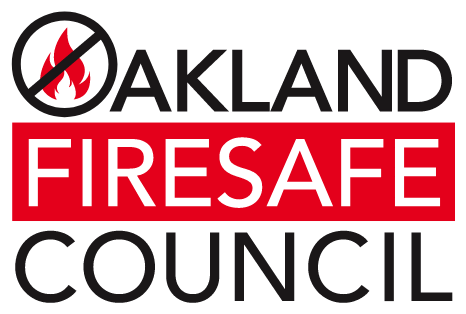There is much misinformation about the City of Oakland’s plans for FEMA grant funds in the Oakland hills. Here are the facts:
- Oakland’s FEMA Grant impacts only two parcels –less than 120 acres–near the Caldecott Tunnel north of Montclair, in middle of what could be a wildfire corridor where 10 major fires have burned in the past. Grizzly Peak parcel from Marlboro south, Monterey Pines, 90% of vegetation there, North Oakland Sports Complex, reduce number of eucalyptus, and keeps Oaks and Bays.
- The project is a fuel management project to manage flame height and firebrand casting which can rapidly spread fire. It took over 2 hours to evacuate Thornhill in 1991 because they couldn’t get out fast enough with the narrow road.
- Eucalyptus are known for their high oil content and ability to cast firebrands long distances—in 1991, then Councilmember Ignacio de La Fuente reported that he was putting out firebrands that had landed on his deck in the Fruitvale, and there were reports of firebrands as far away as San Francisco.
- The FEMA EIS (Environmental Impact Statement) process is based on a biological opinion that was designed to enhance habitat for native flora and fauna, and the project must comply with state and federal environmental regulations.
- By accepting the FEMA Grant, the City of Oakland must complete a state environmental review process (CEQA), which has yet to begin. The contract has not yet been awarded, and then it will take many months—perhaps up to a year—to complete the CEQA. The CEQA process requires several layers of public input—at the start in a scoping session, following release of a draft CEQA report, and of course, the hearings at City Council.
- Both the FEMA EIS and industry standards call for the use of small amounts of herbicide in a diluted formula to be hand painted on to the Cambrian layer of eucalyptus trees immediately after they have been cut. The herbicide only travels into the root system of that plant, or same species plants whose roots are intertwined with the original tree. This is the most cost effective and efficient way to keep eucalyptus trees from resprouting. When these trees do resprout, they send up numerous shoots, replacing the one trunk with many. The FEMA EIS reviewed and allowed this treatment with very specific conditions. The City’s CEQA review process will need to address the use of herbicides before the City can take any action.
- The City’s plan for these two areas is not clear cutting—it is designed to remove the eucalyptus to provide adequate spacing for the oaks, bay and laurel trees to flourish. I am attaching information from CalFire that describes the necessity for allowing 10 feet between trees on flat land and more on slopes. That distance is necessary to keep small fires from getting into the crowns of trees where fire can spread rapidly from tree to tree—especially in high winds.
Click here for FACT SHEET: FEMA GRANT FUNDING FOR OAKLAND HILLS
Click here for full Environmental Impact Study from FEMA
The Oakland Firesafe Council, Oakland Landscape Committee, North Hills Community Association and WPAD are in the process of installing a fire demonstration garden at the Gateway Emergency Preparedness Center on Tunnel Road above Highway 24. It will showcase local plants and landscaping techniques that meet the City’s defensible space requirements. There will be a number of educational panels on the deck that will provide further details.

